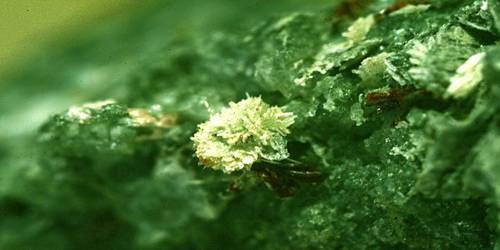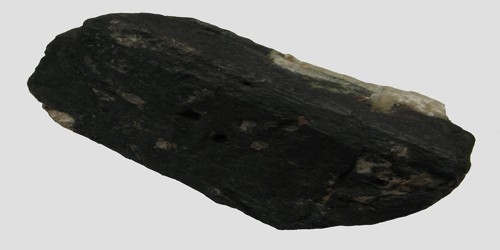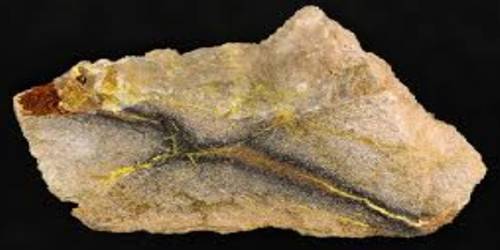Frankhawthorneite, formula- Cu2Te6+O4(OH)2 is a monoclinic copper tellurate mineral named after Prof. Frank Christopher Hawthorne (born 1946), University of Manitoba, Winnipeg, Canada. Hawthorne has been the author or coauthor of more papers in mineralogy and crystallography than any other scientist and received numerous international honors.
It is a monoclinic mineral and a leaf-green color. It was discovered at Centennial Eureka Mine, Tintic District, East Tintic Mountains, Juab County, Utah, in 1995. It has a leaf green color.
General information
- Formula: Cu2Te6+O4(OH)2
- Luster: Vitreous
- Hardness: 3 – 3½
- Crystal System: Monoclinic

Fig: Frankhawthorneite
Properties
- Cleavage: None
- Color: Medium leaf green.
- Density: 5.44
- Diaphaneity: Transparent
- Fracture: Uneven – Flat surfaces (not cleavage) fractured in an uneven pattern.
- Hardness: 3-3.5 – Calcite-Copper Penny
- Luminescence: Non-fluorescent.
- Streak: light leaf green
Occurrence: A very rare secondary mineral formed by the oxidization of primary Cu–Te-bearing sulfides.
Association: Mcalpineite, hematite, acanthite, chrysocolla, connellite, enargite, hinsdalite–svanbergite, pyrite, quartz.
Distribution: From the dumps of the Centennial Eureka mine, Tintic district, Juab Co., Utah, USA.
Information Source:
















